Over the years we’ve lost countless plants to digging, chewing, trampling and sucking critters, mammals and insects both. We finally got smart. It makes sense to invest a little extra time and money to protect your crops and your livestock with physical barriers.
This practice started sort of piecemeal around here, with us only exerting ourselves over particularly problem-prone situations. Nowadays protection is standard for every bed we plant, for our seed starting boxes, and often for new perennials in the ground. The result is peace of mind, better results…and fewer gardening meltdowns from Erik (Squash Baby excepted).
We’ve written about all this before in various posts, but here’s some photos to give you an overview of some of the possibilities:
 |
| Our seedling trays are now contained within The Germinator ™: a large screened box. Prior to this invention, we arched chicken wire over our seedling trays to keep squirrels and loose chickens out. |
 |
| Sometimes we cover our veg beds with a very light floating row cover (Agribon 15) instead of aviary netting. This not only keeps out critters, but also blocks many insects, particularly the cabbage worms that harass our brassica crops. It’s not pretty, but it keeps the plants pretty within. Heavier gauges of row covering can be used to ward off frost, or help jump start plants in cold weather. |



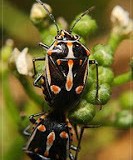
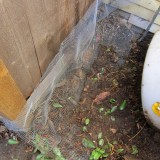

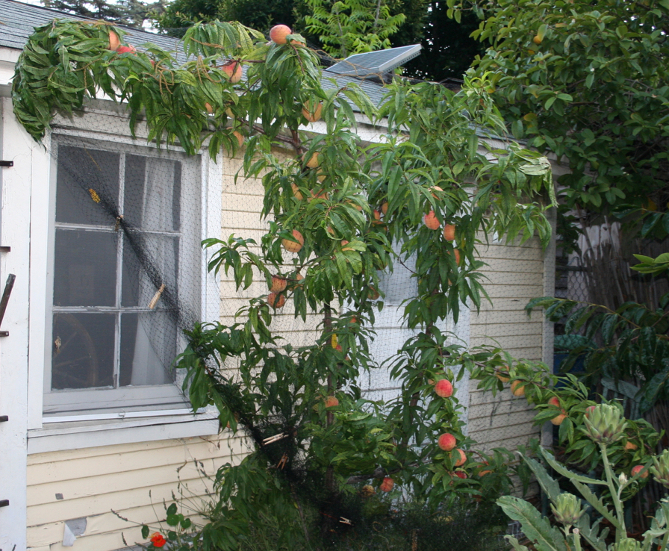
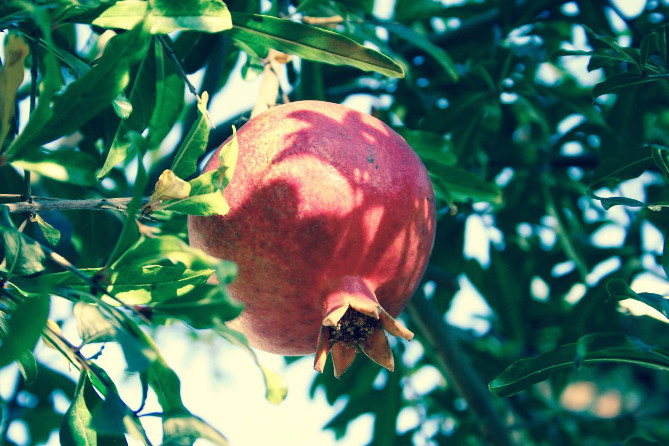
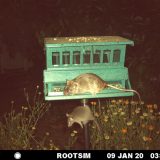
The last couple of years, my wife grew butternut squash, the seedlings for which snails and slugs seemed to have a particular fondness. We ended up cutting a two litre soda bottle in half and using the top half as a cloche to get them past the fragile stage and to a stage where they pretty much took over the rest of the yard.
Ah yes, plastic bottle cloches–another excellent technique. Thanks!
You can use plastic water bottles to create your own “wall of water” for early seedlings. I do most of what you are using, PLUS, barrier at the bottom of the planting beds. Have a problem here with in ground rodents, so each of my planting beds are BIG planters made with pavers. Enough space for water to pass thru, but not enough space for what ever critters we have that tunnel and dig up and eat roots.
I can so commiserate with Erik’s meltdowns, particularly after watching the third zucchini and who knows how many artichokes being sucked under the dirt with no trace of their prior existence. When my rhubarb succumbed to a similar fate at the hands and teeth of the same family of gophers, it was time to consider putting everything in raised beds with 2 layers of chicken wire beneath. One of the beds was rather shallow which we felt would work wonderfully for lettuces and other similar crops. The gophers thought so too and promptly responded by popping up out of the ground, over the border, and burrowing in from the top of the bed. Wire atop and beneath seems the only answer. We have persistent predators up here on the north coast.
Hennypenny: Every day I get down on my knees and give thanks that we *don’t* have gophers! Commiserations back at you.
Every bed in my garden now has a two foot high wire mesh fence. Skunks can’t get over anything higher than two feet. I had no idea the kind of damage skunks can do to a garden bed before I had them (garden beds, and now, skunks).
Before the fencing, I would wake up to find 8-10 inch deep holes dug, potatoes dug out, seedlings dug out, and/or foot high plants dug out. In fact, anything that could be dug out was dug out. Melt downs were common. Even now, in the spring, somehow an occasional baby skunk makes it under the fences and digs, digs, digs. The damn things are too thick to find their way back out though and I have to help them find a way out and not get sprayed.
Just got that settled and last year had a horrible bout of cut worms and aphids.
Never relax I guess.